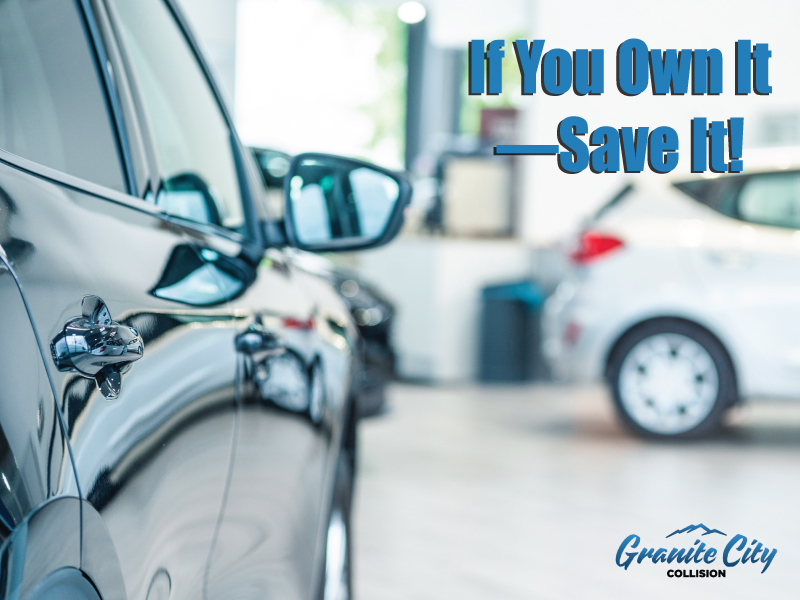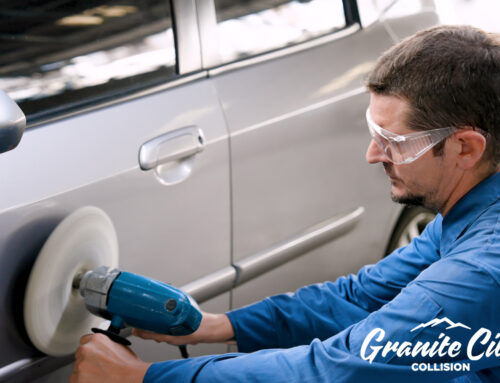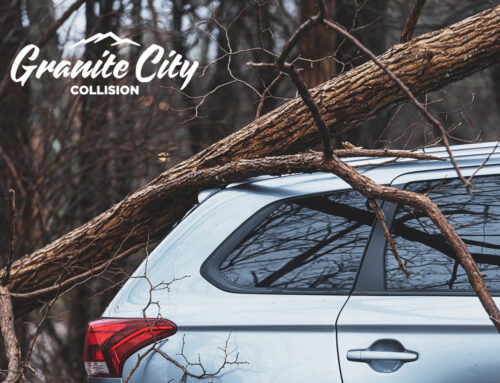If you outright own your car and it starts needing repairs, what do you do? Keep it and get it fixed, or drop it and buy a new one? This is truly one of life’s tough decisions: there is the worry that once you pay for one thing to get fixed, the needed repairs will only continue to pop up; on the other side of this though, the thought of buying again and making payments makes the stomach turn a little. What to do?! At Granite City Collision, we’ve been through this situation countless times and we are happy to help those car owners trying to decide to keep it or ditch it.
Nobody wants a lemon and nobody wants a money pit. Once you own your car, chances are it’s no lemon, but the worry of costly repairs looms. You find yourself anxiously waiting for something to go wrong; you hesitate to take it on longer trips; you have nightmares of your car robbing you of all your money. Maybe it’s not quite that intense, but it is a serious matter.
Before deciding to keep it or ditch it, there are some important factors you need to consider, such as the cost of buying a new, or even pre-owned, car beyond the asking price of the vehicle itself. If you choose to buy a car, expect to spend at least $2,000 (plus tax) on registration fees. And, depending on where you are buying, there can be other hidden costs that pop up.
The Breaking Point
Our first piece of advice is to find your breaking point. This “point” may be hypothetical for now, but at least you are making yourself aware that there is a limit. Do this by first coming up with a ballpark number of the needed repairs: is this a $1,000 fix or a $4,000 fix? Once you have this, look up the Kelley Blue Book (free website) value of your car. *It’s also important to consider gas mileage differences, as newer cars tend to be better on fuel; new cars also come with warranties and other bonuses, so keep those in the overall factor as well.
If the car is not worth the cost of repairs, and the difference in the use/cost of fuel is a factor, the decision is clear: ditch it. But if not, even if the numbers are close, chances are you are better off keeping the vehicle and having the repairs done.
A Breakdown of Both Options
At Granite City Collision, we know this decision is not an easy one, so here is a list of pros and cons to both options—hopefully this makes things a bit easier:
Fixing Your Car—
· Less hassle on your part (shopping for and buying a new vehicle can be exhausting!).
· You don’t have to deal with or pay for changes with your insurance.
· You know your car and most/all of its history. Buying brand new, you do not know your vehicle.
· You don’t have to worry about advertising and selling your car.
· All cars need repairs within their lifetimes, and just because your car is old, and maybe even out of date, doesn’t mean it’s ready to be put down.
Buying a New (or newer) Car—
· Often come with warranties and free maintenance for a period of time.
· Newer cars may come with more advanced safety features.
· Younger cars tend to be better at fuel consumption.
· You will have the peace of mind that you have something reliable.
Even after considering the pros and cons of each side of the issue, it’s imperative you don’t make this decision alone. Let us help. Bring your car in and let our technicians give it a close look to see what is wrong with the vehicle, as well as, what other issues may arise later.
Another thing to consider is that if you do decide to ditch your car, you want it running and looking at its best so you can get the most money out of it. If this means paying for some smaller repairs to be done, it could be worth it.
Back to Step One
Now that you see the process, let’s back up a little. Assessing your car’s current value is step one, and it’s probably the most important. To ensure this is done as accurately as possible, here are some tips for estimating your vehicle’s value:
1. Begin with the Pricing Guides. Online pricing guides are a good place to start by entering as much information about your car as possible (mileage, overall condition, etc.). We suggest checking the number you get with multiple websites—stick to the free ones.
2. What Value Do You Need? A trade-in value is not the same as the value derived from selling to a private party (you usually get more money out of a private sale, depending on the condition of your car). The Kelley Blue Book website can give you both numbers.
3. Look For Cars. It is important to do a cursory search of comparable cars in your area. Do this by visiting AutoTrader’s website or, better yet, go to the Facebook Marketplace to get an idea of what other vehicles, that are similar to yours, are selling or being traded for.
4. Based on the previous steps, re-adjust your car’s value—did it go up or down?
5. Consider Other Factors. The time of year you are wanting to get rid of your car, the popularity of the make and model year, these have a huge impact on the amount of money you can get out of your car, so be sure to keep these in mind.
Suggested Websites
As stated earlier, there are a lot of websites that claim they are the best at providing accurate car-value information. Here are the ones we have found to be most accurate:
EDMUNDS. This site came up with the term, “true market value” by basing entered car values against real-world dealerships to indicate the average price people paid for cars in your area. This information is impartial and is an incredible aid for car sellers when negotiating with a buyer.
KELLEY BLUE BOOK. One of our favorites and most used, this site offers an easy-to-use calculator that values your car at the trade-in and selling prices. We advise using it in conjunction with these others.
NADA GUIDES. These guides are created by the National Automobile Dealer’s Association, and they use data from millions of car transactions in order to get an approximate value on your car. You will notice there are multiple guides you can use, and we suggest using more than one. Not all results are the same, but from the ones you get, it shouldn’t be difficult to come up with a fairly accurate number.
Understanding Terms
Before getting ahead of yourself, get to know these key terms—knowing them could save you money!
· Trade-in Value: we start with this one because it is typically the lowest amount you will be offered for your vehicle. Sometimes called the “wholesale price,” your trade-in value is what a dealership will pay you for your car.
· Private Party Resale Value: usually the higher price, this is the amount you could get from anyone other than a car dealer after you advertise on your own.
· Dealer Retail Value: this number comes even higher than the previous two because this is the asking price for your car if a dealer were selling it—a good number to pit against the trade-in value so you can see exactly how much the dealership will turn around and sell your trade-in for.
· Certified Pre-Owned Value: some pre-owned vehicles are sold along with a bumper-to-bumper warranty after they have been closely inspected. Because they have been more rigorously inspected than a typical used car, they tend to have a higher asking price.
When it comes down to it, it’s better if you can keep your car and have the repairs done. On the other hand, that line between a keeper and a clunker can be a thin one. Your best bet is to bring your questionable car over to us at Granite City Collision for a quick assessment. We could end up saving you thousands of dollars—come see us today!






